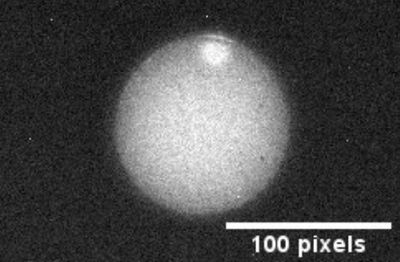MCUBE, Institut Charles Sadron (Strasbourg, FR)
DNA Encapsulation in Giant Unilamellar Vesicles
Giant unilamellar vesicles (GUVs) are spherical entities consisting of a single lipid bilayer and range from 1 to 100 microns in size. They are structurally similar to biological cells, which are also bound by a lipid bilayer and have a similar size. This makes GUVs suitable for use as very simple cellular models. Encapsulation of relevant biomolecules inside thee vesicles has been explored in order to obtain and study artificial cells.
At the Membranes and Microforces (MCUBE) group at ICS, Strasbourg, I studied the encapsulation of various types of DNA in these vesicles using a gel-based approach. Under Dr. Schmatko's guidance, we found there to be a cut-off length for the DNA strands that could be successfully encapsulated in the GUVs. Subsequently, we also hypothesised a mechanism for DNA encapsulation, believing it to be dependent on the dynamic between the diffusion of DNA through the gel and the rate of vesicle formation.
Image on the right show a GUV filled with DNA under a fluorescence microscope. Taken from my thesis.

Department of Chemical Engineering, IIT Bombay (Mumbai, IN)
Hollow Fibre Membranes for Hemodialysis
Polymeric hollow fibre membranes are commonly used for water filtration. Under Prof. Jayesh Bellare's guidance, Dr. Surendra K. Verma and I explored their use in hemodialysis. The membranes were modified to have excellent resistance to platelet and protein adhesion, while efficiently filtering urea, creatinine and other metabolites.
Image on the right shows a SEM micrograph of a single fibre, highlighting its porous nature. Image taken from my thesis.

This website uses cookies.
We use cookies to analyze website traffic and optimize your website experience. By accepting our use of cookies, your data will be aggregated with all other user data.